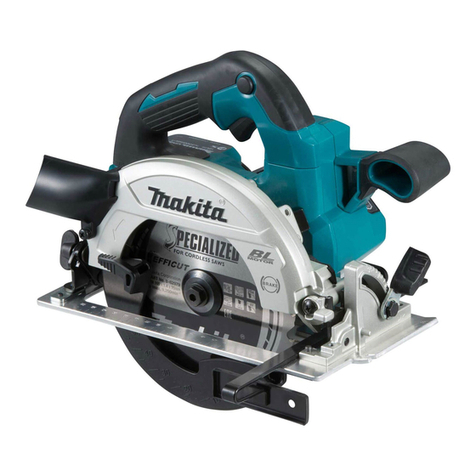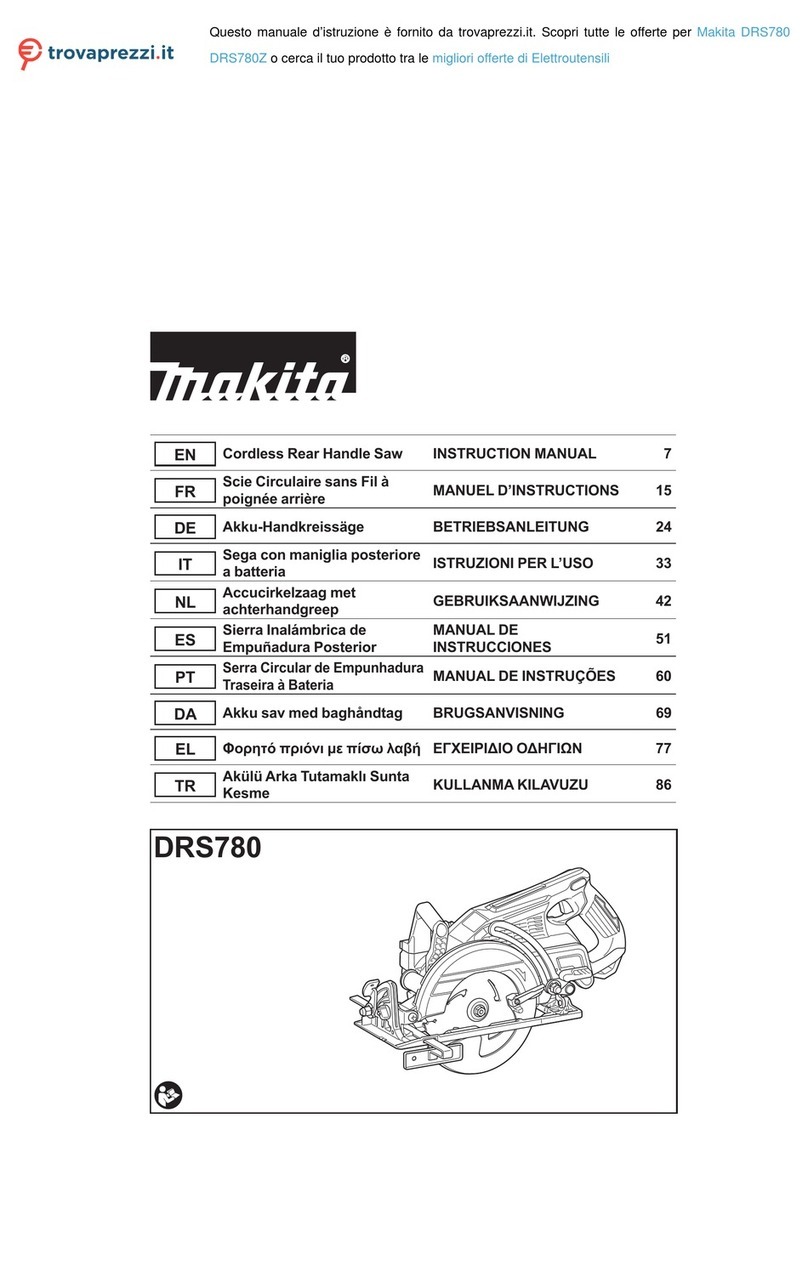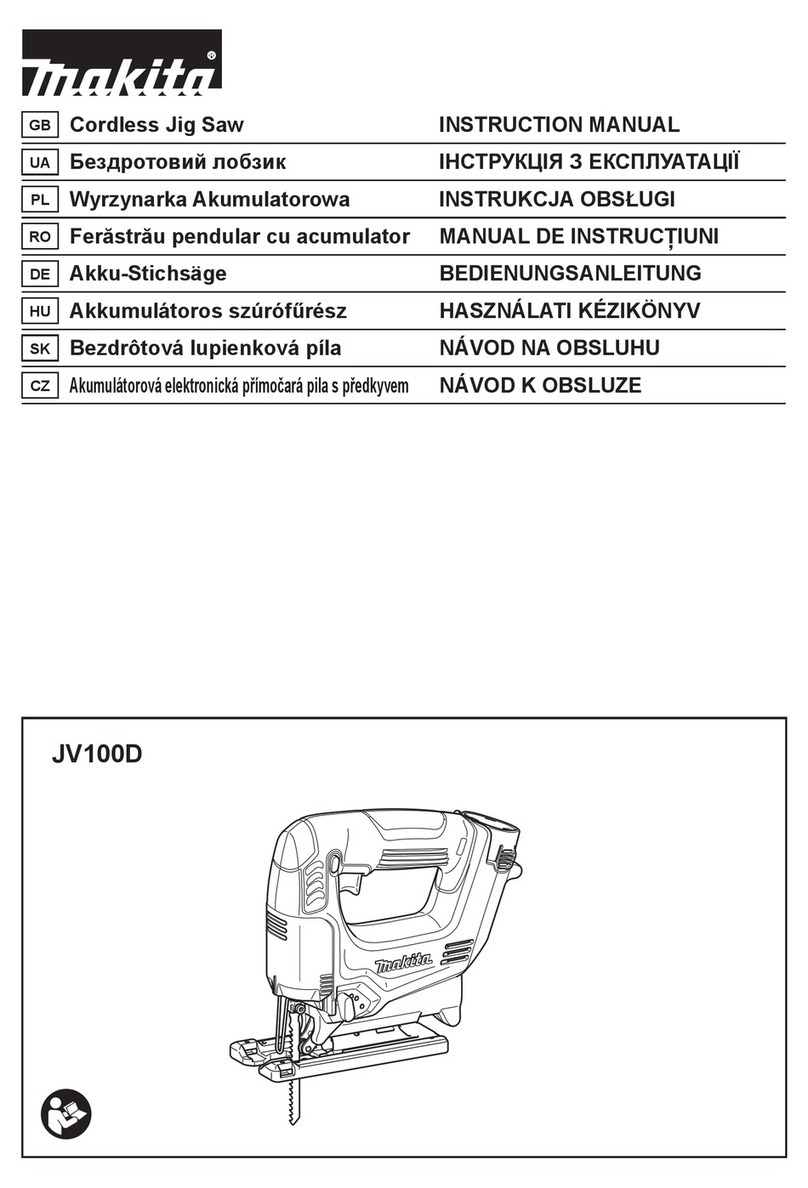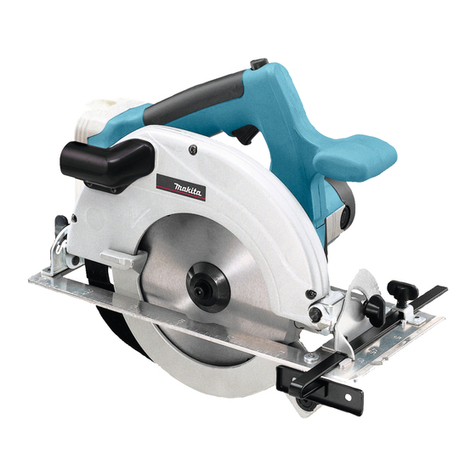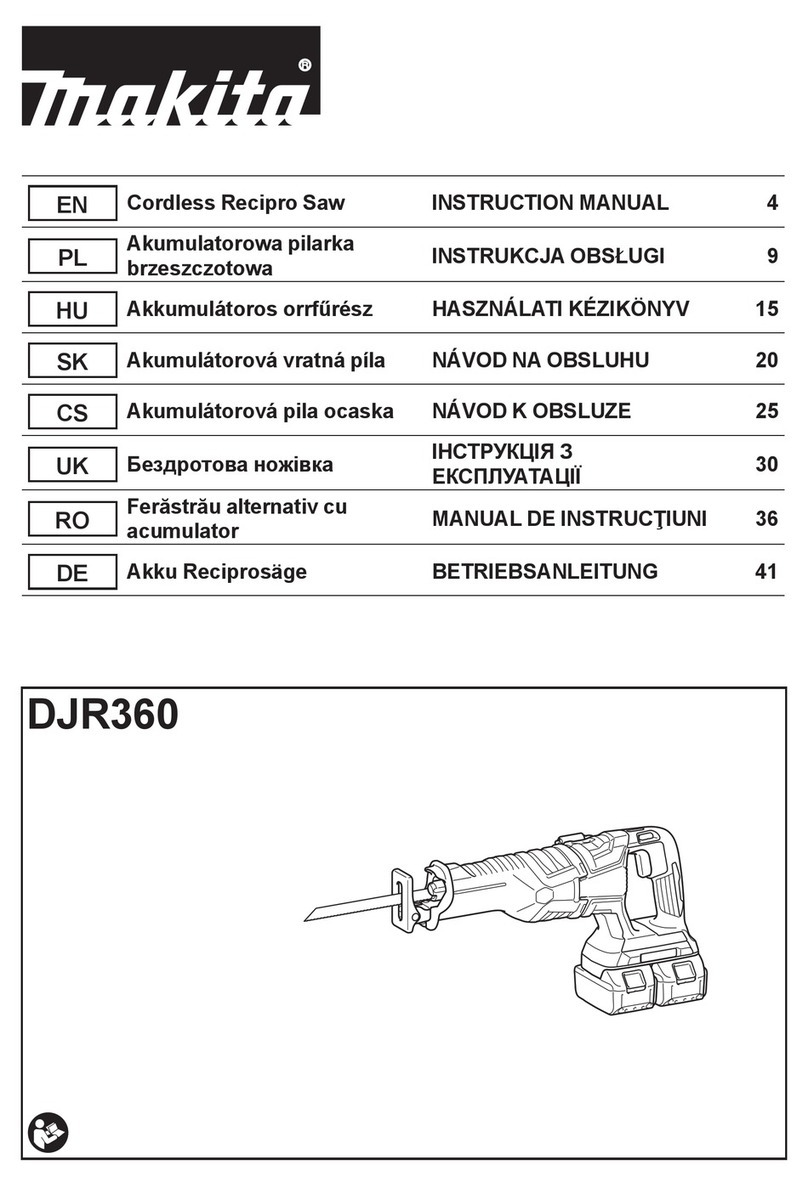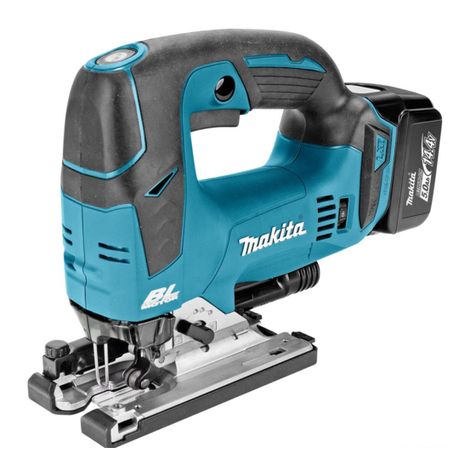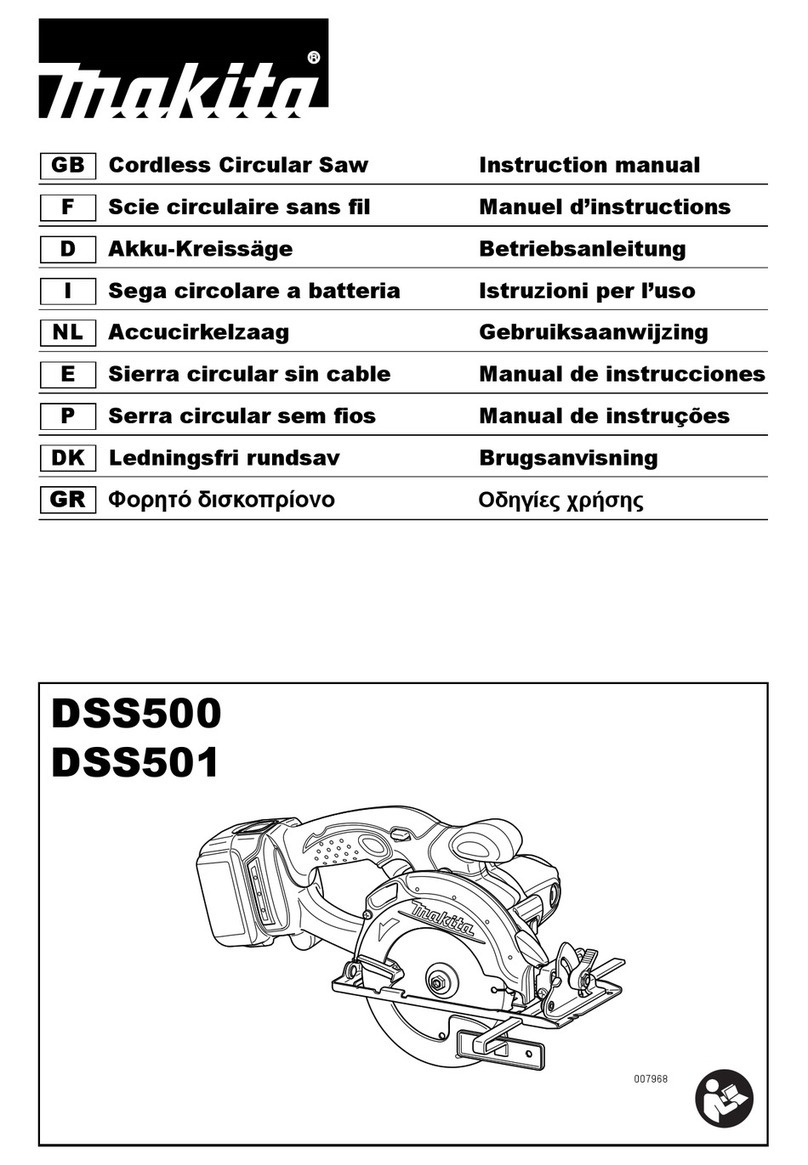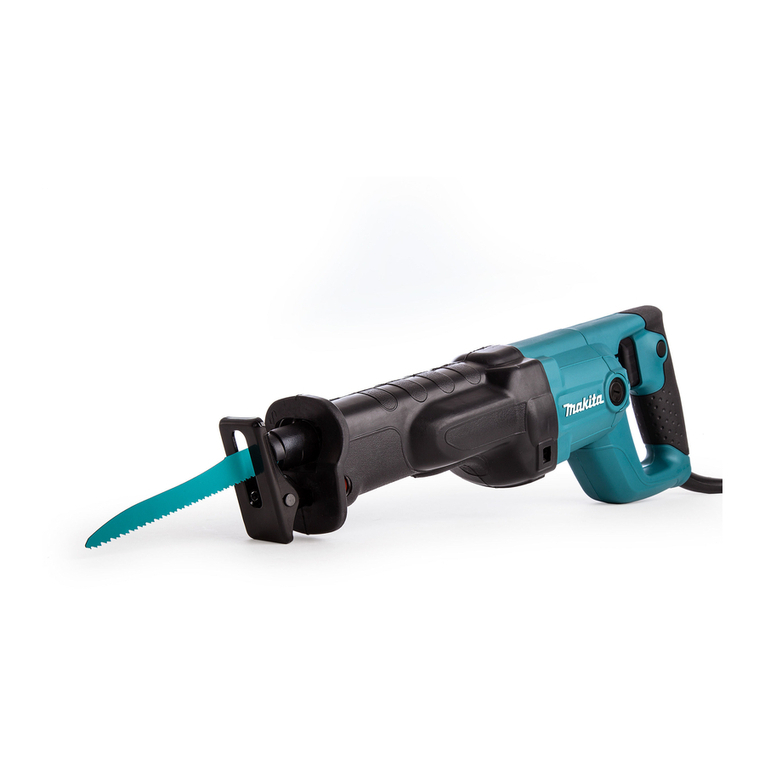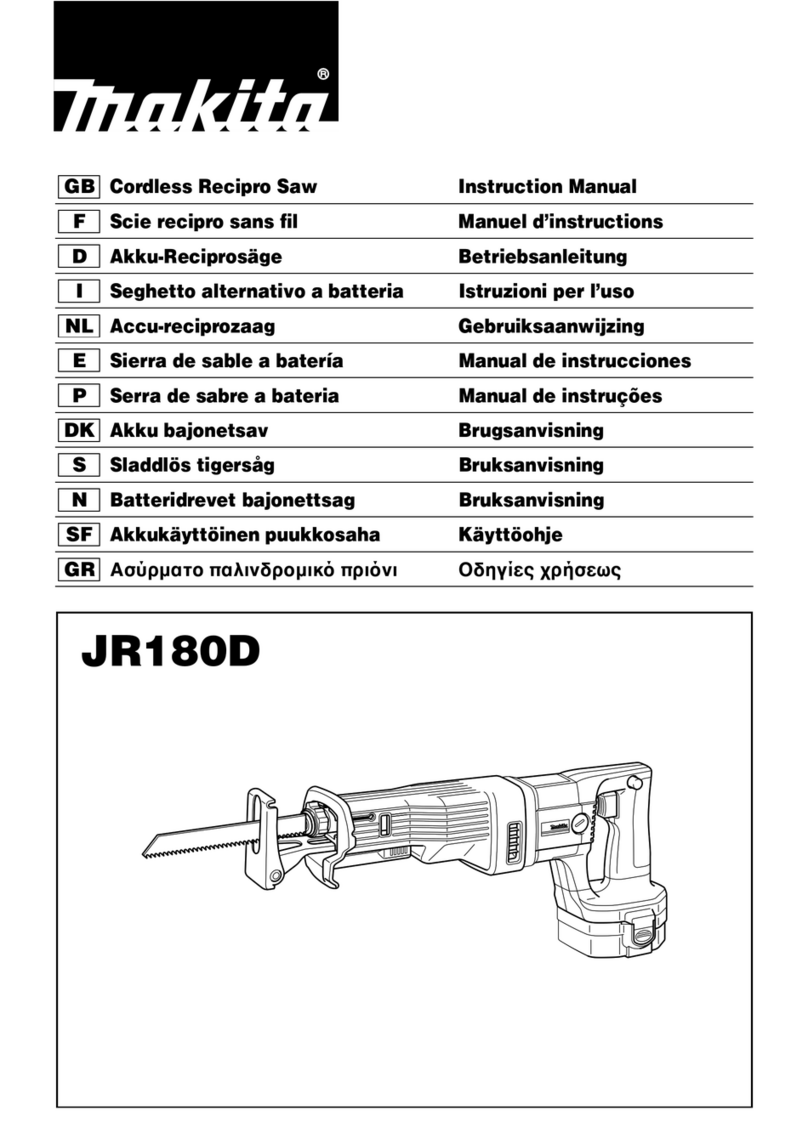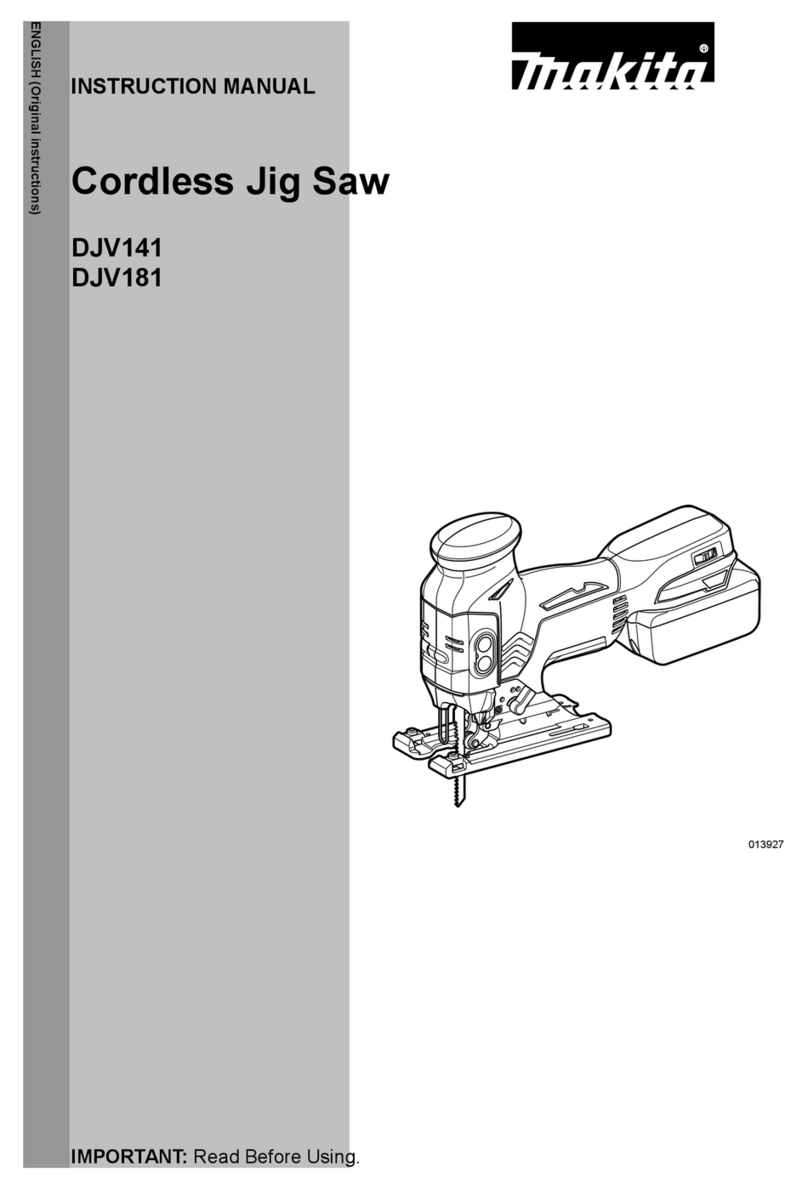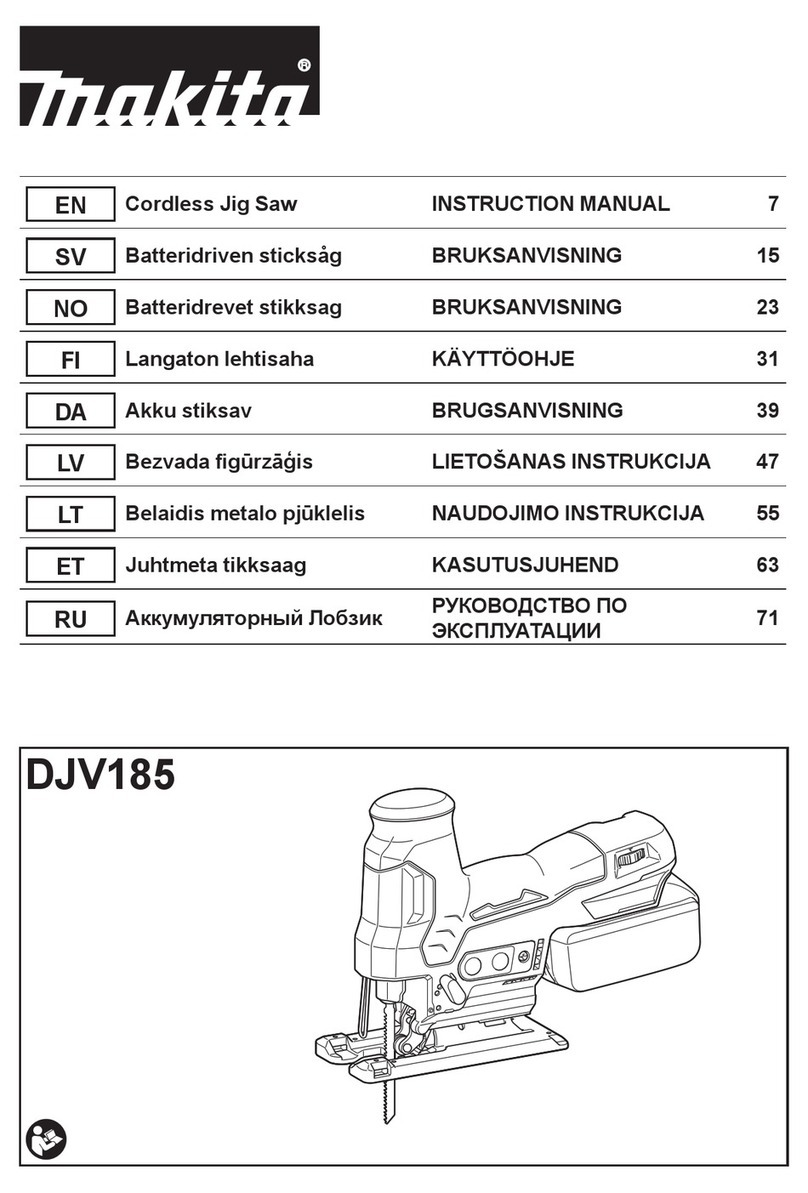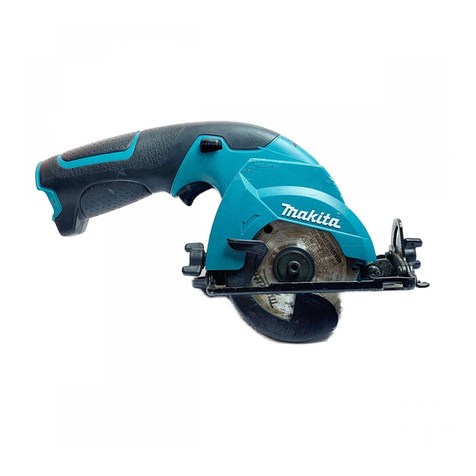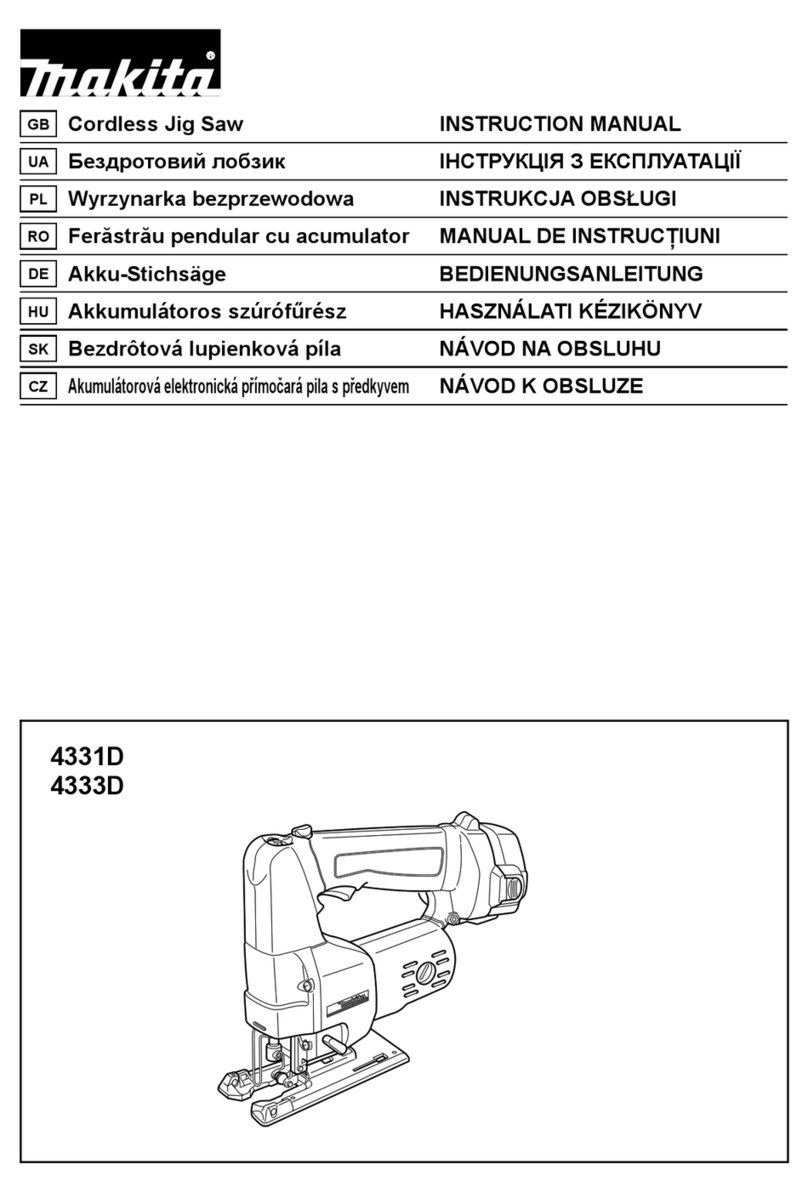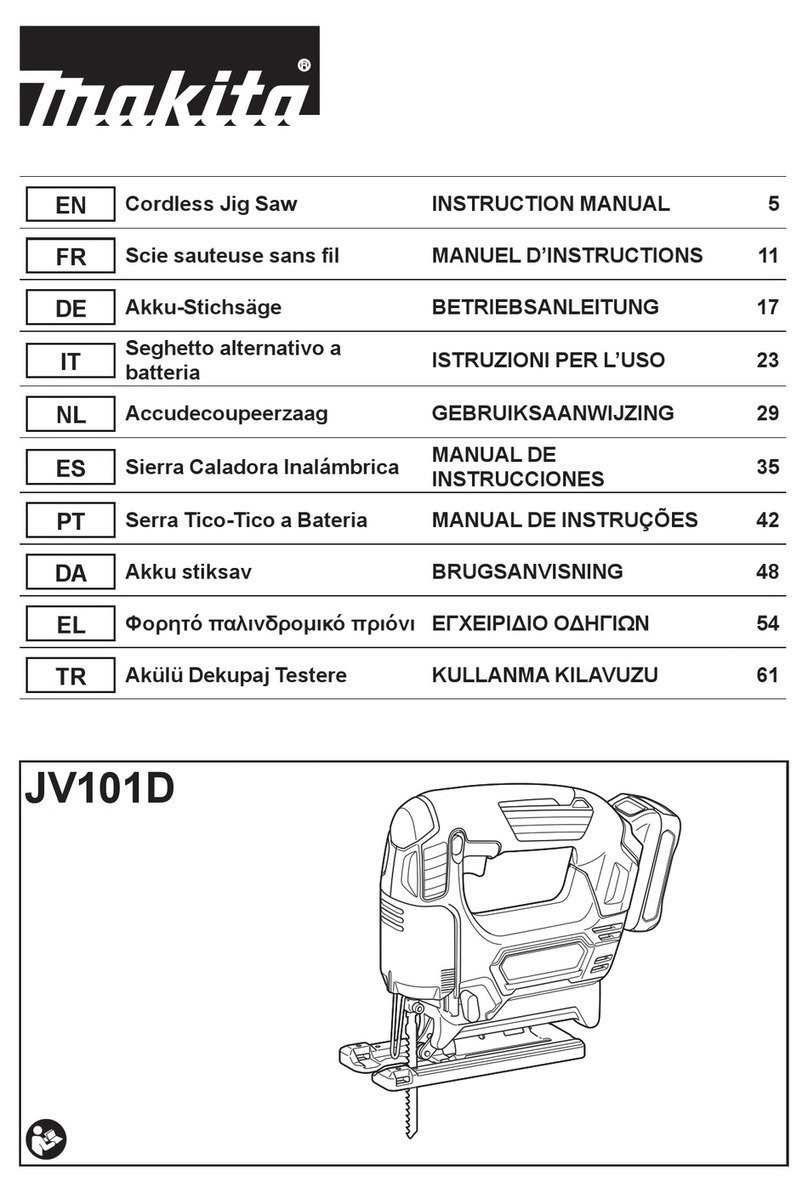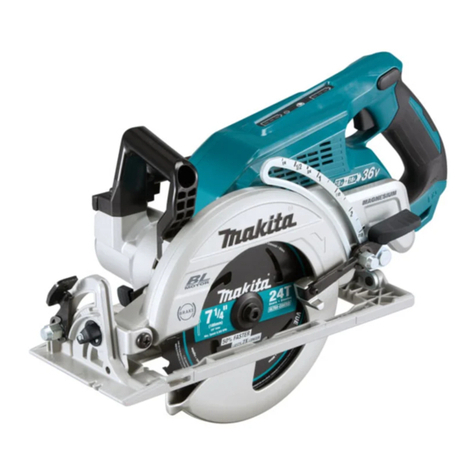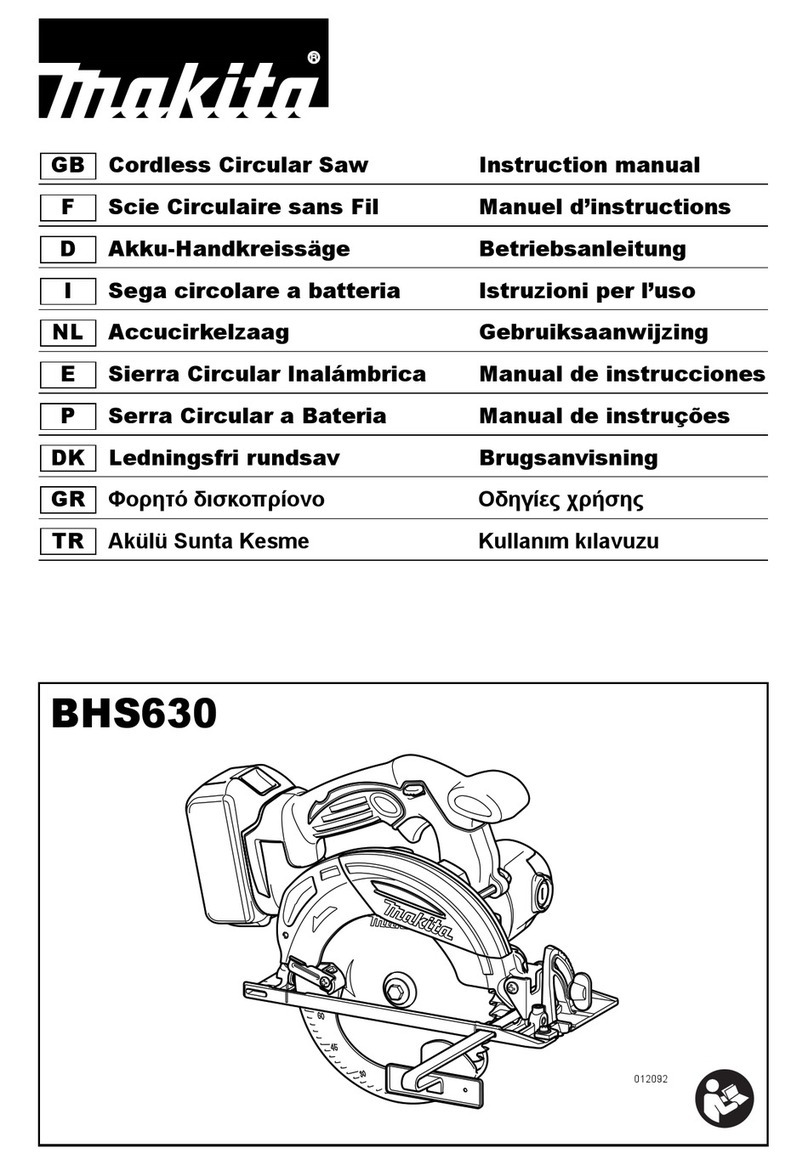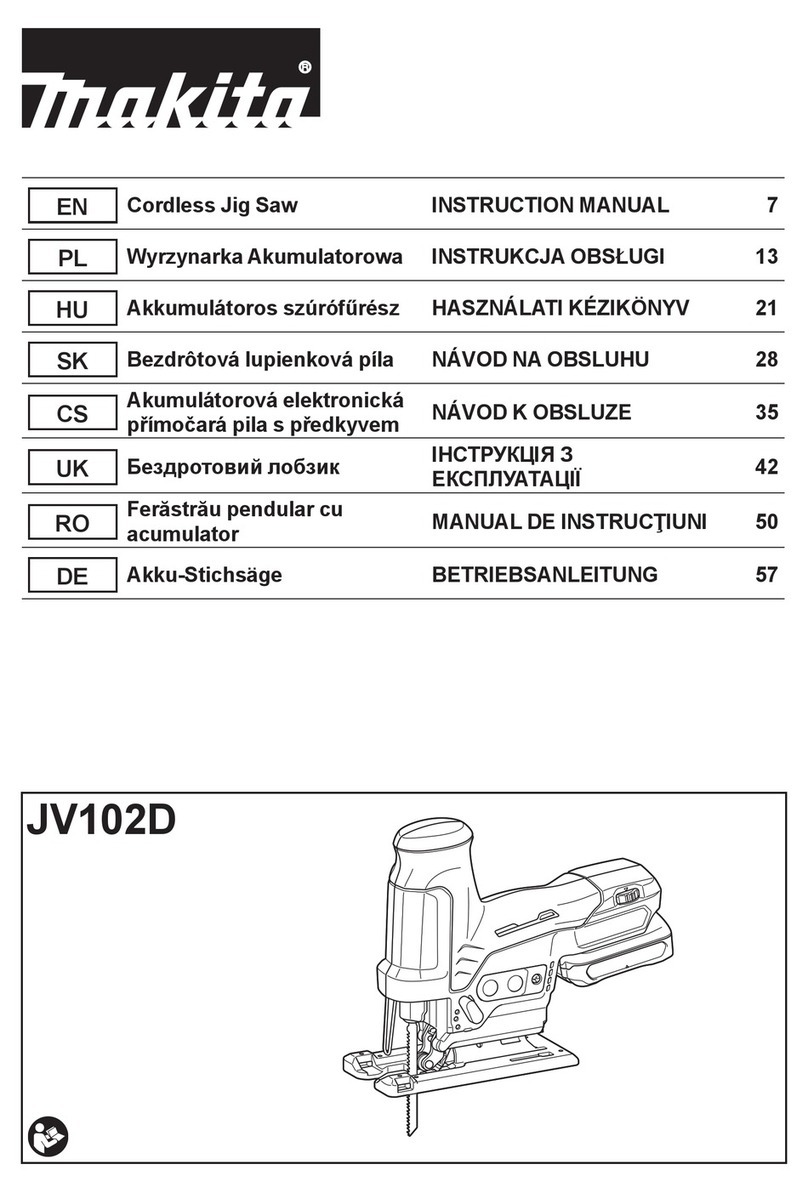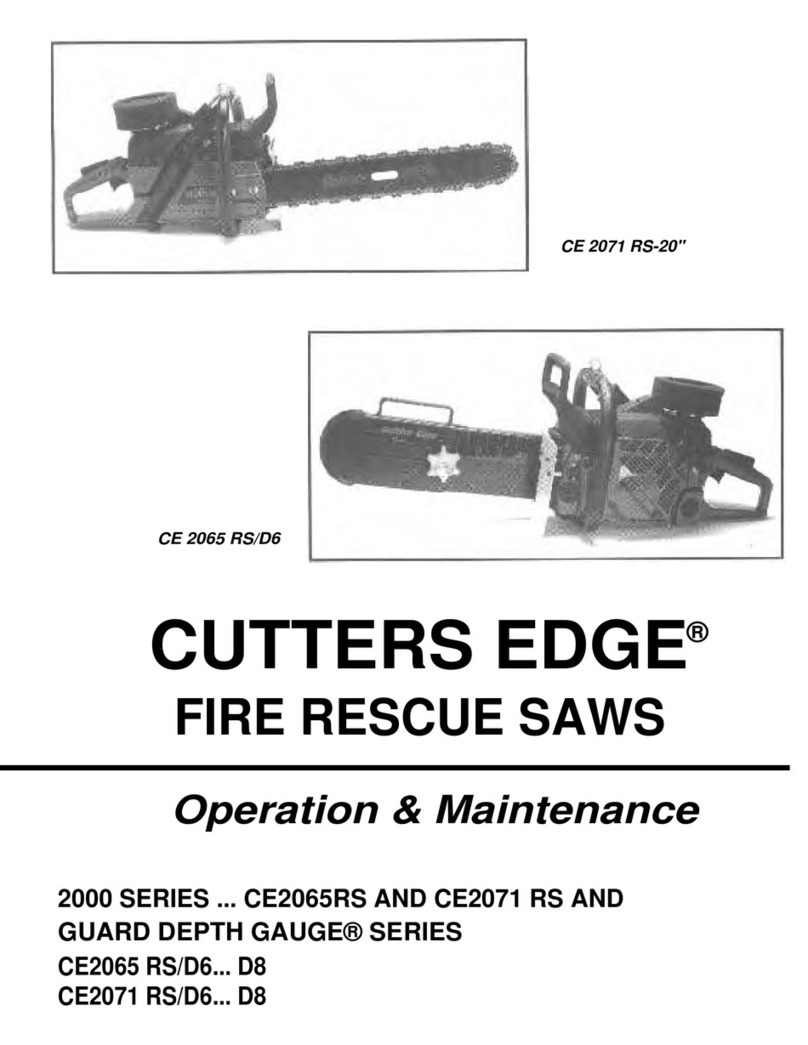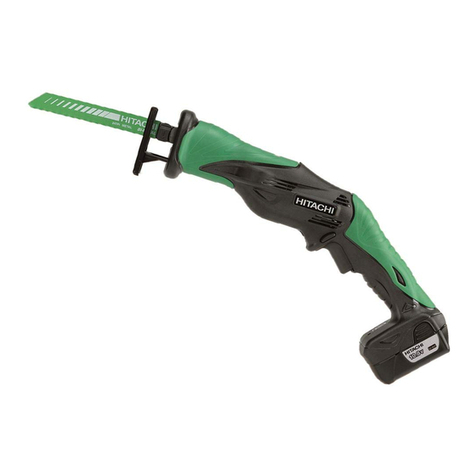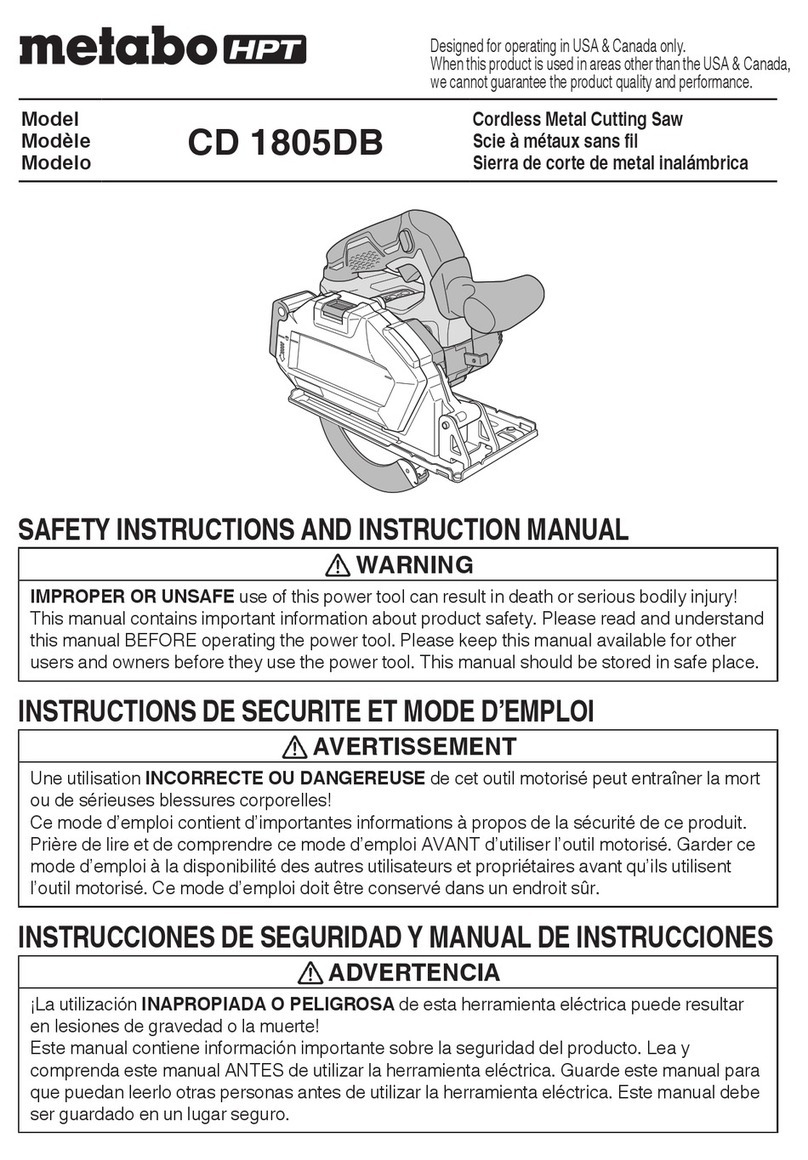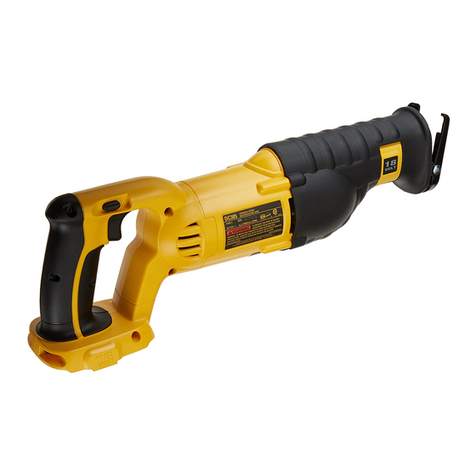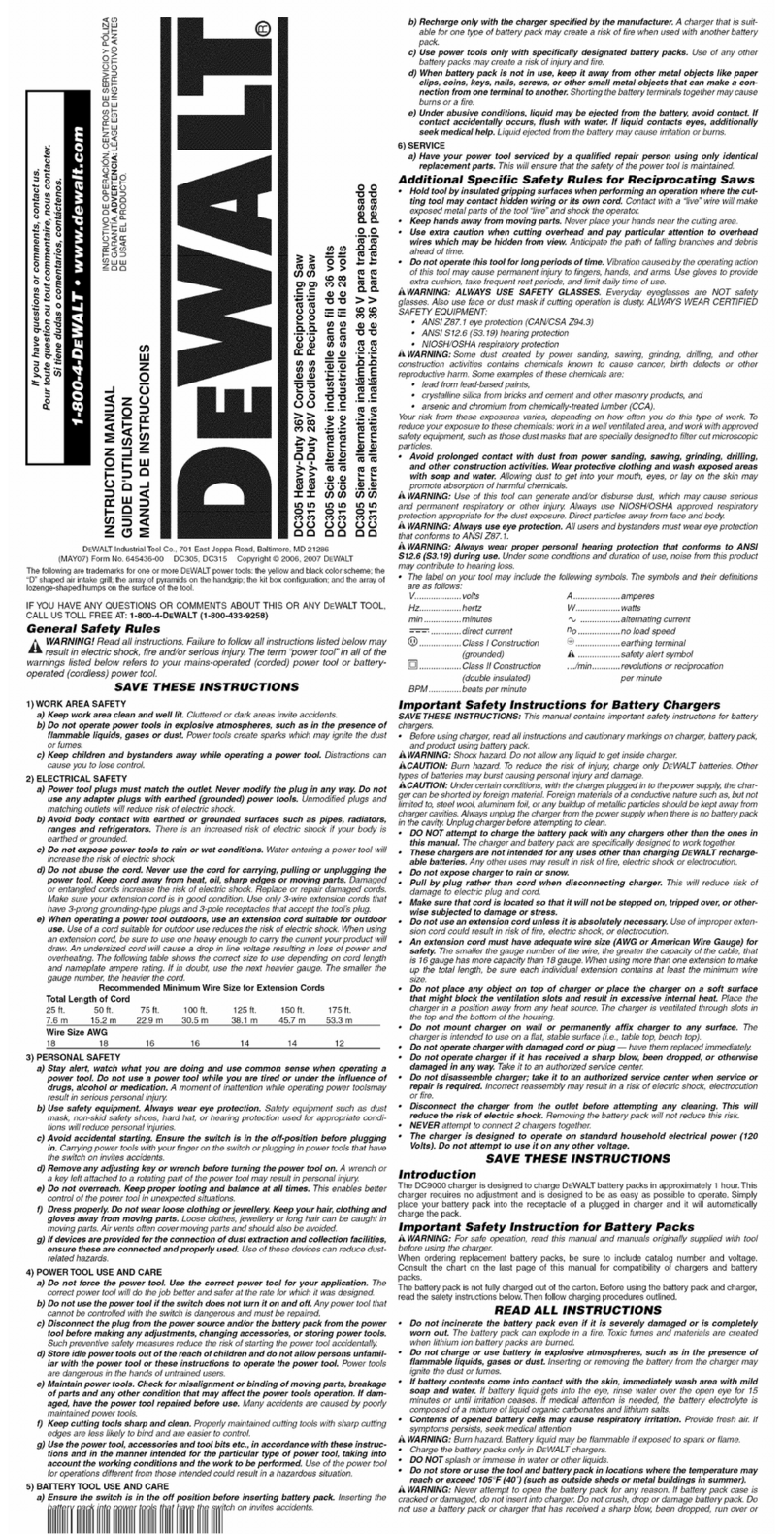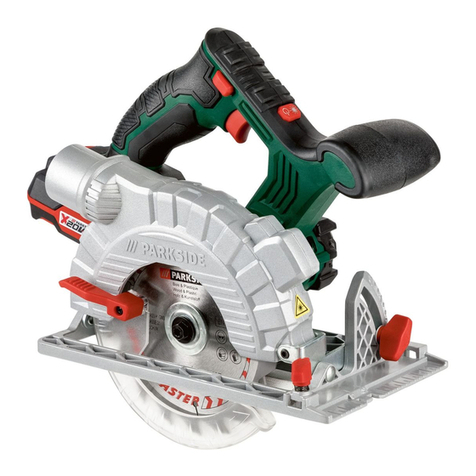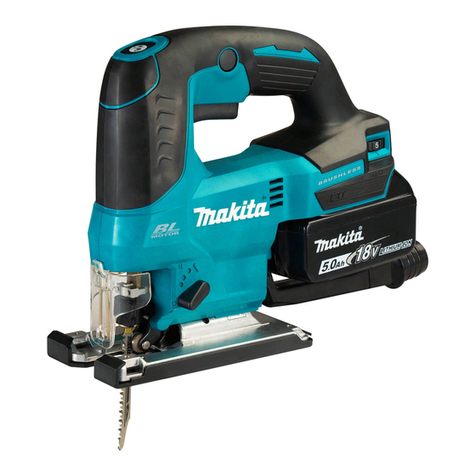
24
De schoen bijstellen (zie afb. 3 en 4)
Wanneer een gedeelte van de snede van het zaagblad
niet meer goed snijdt, dient u de positie van het zaagblad
bij te stellen om een ongebruikt, scherp gedeelte van de
snede te gebruiken. Het zaagblad zal dan langer
meegaan. Om de schoen bij te stellen, duwt u eerst de
schoenknop in de richting “A” tot u een klikgeluid hoort, en
stelt u de schoen bij in een van de vijf mogelijke standen.
Vervolgens vergrendelt u de schoen weer door de
schoenknop in de richting “B” te duwen tot u een
klikgeluid hoort.
In- en uitschakelen (zie afb. 5)
LET OP:
• Controleer altijd, voordat u de accu in het gereedschap
steekt, of de aan/uit-schakelaar op de juiste manier
schakelt en weer terugkeert naar de uit-stand nadat
deze is losgelaten.
• Wanneer u het gereedschap niet gebruikt, drukt u op
de uit-vergrendelknop vanaf de A-kant om de aan/uit-
schakelaar te vergrendelen in de uit-stand.
Om te voorkomen dat de aan/uit-schakelaar per ongeluk
wordt bediend, is de uit-vergrendelknop aangebracht.
Om het gereedschap te starten, drukt u vanaf de B-kant
op de uit-vergrendelknop in en knijpt u de aan/uit-
schakelaar in.
De draaisnelheid van het gereedschap neemt toe
naarmate u meer druk uitoefent op de aan/uit-schakelaar.
Laat de aan/uit-schakelaar los om het gereedschap te
stoppen Na gebruik, vergeet u niet vanaf de A-kant op de
uit-vergrendelknop te drukken.
De lamp op de voorkant inschakelen
(zie afb. 6) (Voor model BJR181)
LET OP:
• Kijk niet rechtstreeks in het licht of naar de bron van de
lamp.
Knijp de aan/uit-schakelaar in om de lamp op de voorkant
in te schakelen. De lamp blijft branden zolang u de aan/
uit-schakelaar ingeknepen houdt. De lamp gaat 10 tot
15 seconden nadat de aan/uit-schakelaar is losgelaten
automatisch uit.
OPMERKING:
• Gebruik een doek om het vuil van de lens van de lamp
te vegen. Wees voorzichtig de lens van de lamp niet te
bekrassen om de lichtopbrengst niet te verlagen.
Haak (zie afb. 7) (Voor model BJR181)
LET OP:
• Druk op de uit-vergrendelknop vanaf de A-kant om de
aan/uit-schakelaar te vergrendelen in de uit-stand. (Zie
het tekstdeel getiteld “In- en uitschakelen”.)
• Hang het gereedschap niet op aan de haak op een
hoge plaats of op een mogelijk instabiele ondergrond.
De haak is handig om het gereedschap tijdelijk aan op te
hangen.
Hiertoe draait u de haak gewoon omhoog totdat deze
vastklikt in de geopende stand.
Als u de haak niet gebruikt, vouwt u deze weer omlaag
totdat deze vastklikt in de gesloten stand.
ONDERDELEN AANBRENGEN/
VERWIJDEREN
LET OP:
• Controleer altijd of het gereedschap is uitgeschakeld
en de accu is verwijderd alvorens enige
werkzaamheden aan het gereedschap te verrichten.
Het zaagblad aanbrengen en verwijderen
LET OP:
• Verwijder altijd eerst alle houtsnippers en vreemde
stoffen die aan het zaagblad, de zaagbladklem en/of
de schuivende delen kleven. Als u dat niet doet is het
mogelijk dat het zaagblad onvoldoende wordt
vastgeklemd, wat kan leiden tot ernstig persoonlijk
letsel.
Om een zaagblad aan te brengen, zorgt u ervoor dat de
zaagbladklembus in de ontgrendelde stand op de
behuizing staat alvorens een nieuw zaagblad in te steken.
Als de zaagbladklembus in de vergrendelde stand staat,
draait u de zaagbladklembus in de richting van de pijl
zodat deze in de ontgrendelde stand wordt gezet.
(zie afb. 8)
Steek het zaagblad zo ver mogelijk in de zaagbladklem.
De zaagbladklembus draait en het zaagblad wordt
vastgezet. Controleer dat het zaagblad er niet uit
getrokken kan worden, ook niet als u er aan trekt.
(zie afb. 9)
OPMERKING:
• Als u het zaagblad er niet diep genoeg insteekt, kan
het zaagblad er onverwachts uit geworpen worden
tijdens gebruik. Dit kan uitermate gevaarlijk zijn.
Als de hendel in het gereedschap geplaatst is, schakelt u
het gereedschap kortstondig in om het zaagblad eruit te
laten komen, zoals aangegeven in de afbeelding.
Haal de accu van het gereedschap af.
Om het zaagblad te verwijderen, draait u de
zaagbladklembus helemaal in de richting van de pijl. Het
zaagblad kan worden verwijderd en de zaagbladklembus
staat vast in de ontgrendelde stand . (zie afb. 10)
OPMERKING:
• Houd uw handen en vingers uit de buurt van de hendel
tijdens het inschakelen. Als u dat niet doet, kan
persoonlijk letsel ontstaan.
• Als u het zaagblad verwijdert zonder de
zaagbladklembus geheel te draaien, wordt deze niet
vastgezet in de ontgrendelde stand . In dat geval
draait u nogmaals de zaagbladklembus helemaal en
controleert u dat de zaagbladklembus vaststaat in de
ontgrendelde stand .
BEDIENING (zie afb. 11)
LET OP:
• Druk tijdens gebruik de schoen altijd stevig tegen het
werkstuk. Als tijdens gebruik de schoen op een afstand
van het werkstuk wordt gehouden, zullen sterke
trillingen en draaibewegingen het gevolg zijn waardoor
het zaagblad op een gevaarlijke manier zal afbreken.
• Draag tijdens het zagen van metaal altijd
handschoenen om uw handen te beschermen tegen
rondvliegende warme deeltjes.
